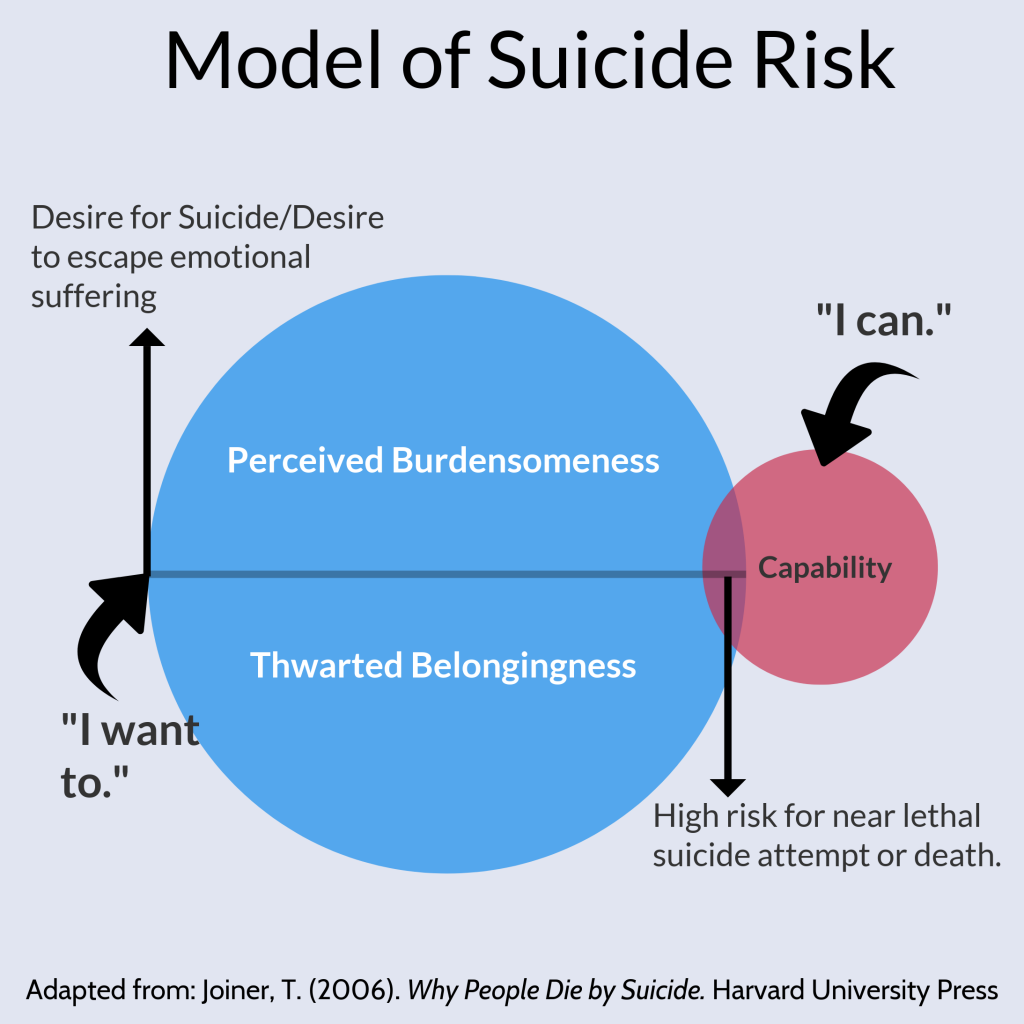Understanding Workplace Suicide
Suicide is a complex human tragedy that leaves behind many who are profoundly impacted.
By understanding suicide and what can be done to prevent it, workplaces can make a difference, alleviate suffering and save lives.

Understanding the Suicidal Mind

In his book Why People Die by Suicide, Dr. Thomas Joiner explains that those who kill themselves not only have a desire to escape unimaginable suffering through death, they have also learned to overcome the instinct for self-preservation. This theory goes beyond previous theories of suicide that were adequate in describing psychological risk factors but did little to explain why some people with those risk factors died by suicide and others did not.
The theory states that wanting death is composed of two psychological experiences. The first is a perception of being a burden to others (perceived burdensomeness). According to Joiner, when people are in this state they feel that their death is worth more to the people who love them than their life is. The second common factor in the desire to die is a social disconnection to something larger than oneself (thwarted belongingness). When people lose key relationships with partners, children, colleagues, and friends through death, divorce, separation, moves, layoffs, or conflict, they can experience profound distress that can lead to a desire to die. Suicidal thoughts become more lethal, however, when people have what Thomas has called an “capability” for Suicide.” If suicide desire is the “I want to” part of the equation, “capability” is the “I can” part. In other words, those who are most likely to take lethal action on their suicidal thoughts are those who have a fearlessness of death.

People can have increased capability for suicide when they have a temperament for risk-taking or when they have been exposed to painful and provocative experiences. By being exposed to violence and life-and-death situations, people become more accustomed and less afraid. For some people this means a history of physical or sexual abuse. Capability also comes from knowing what to do. For instance, when people have access to and familiarity with lethal means like firearms, lethal medication and high places. Thus, we must have both conditions to have increased risk for suicide. A desire for suicide is necessary but not sufficient. Suicidal thoughts are relatively common experiences, but suicide death is much less so. This is because most people who have suicidal thoughts, thankfully, do not have the acquired capacity for lethal self-harm.

While self-reliance is often valued as a sign of strength and mental stability, it is paradoxically one of the strongest predictors of poor mental health and suicide risk; thus, industries that value self-reliance are often at heightened risk. Attitudes and beliefs like “I can solve my own problems” and “others do not need to worry about me” are often a major barrier to seeking support from family, peers or professionals. Thus, it is not surprising that occupations that are male-dominated and value stoicism and traditional masculine norms like construction and extraction have the highest rates (53.2/100,000 for men) of suicide.

